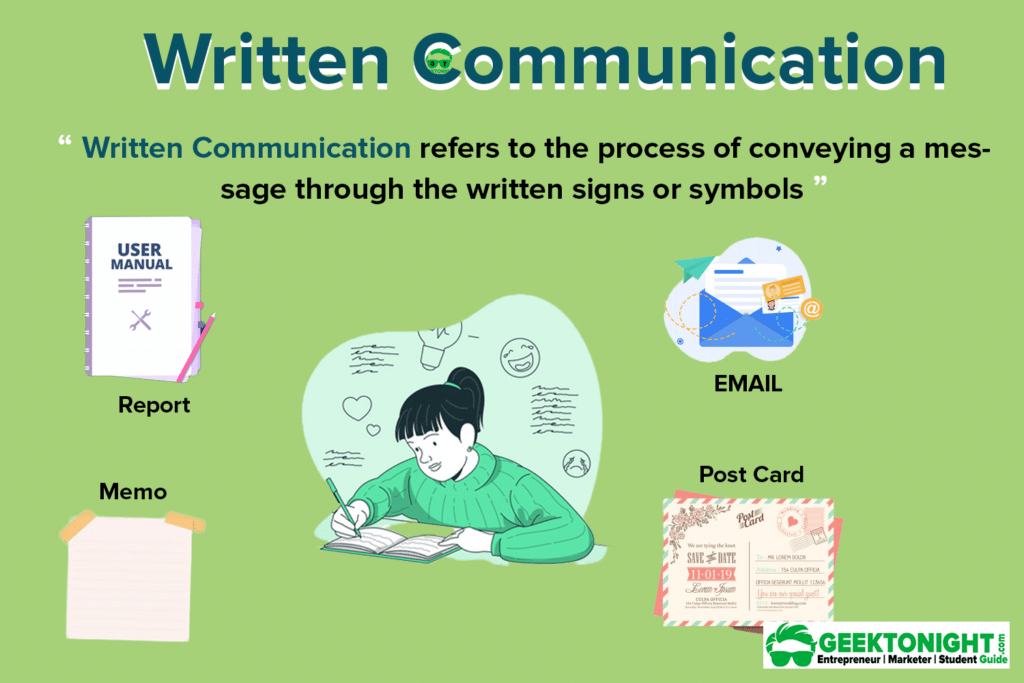The Different Types of Business Communication and Their Benefits
Business communication is the lifeblood of any business.
Whether yours is focused around sharing info with team members, engaging with stakeholders, or making big decisions, how you communicate can make or break your success.
From downward communication that streams through employees to management or nonverbal cues in face-to-face meetings, understanding and mastering different types of business communication is key to a productive work environment and achieving business goals.
In today’s ever saturated business world, the tools and methods of communication have gone beyond phone calls and memos. For small businesses, especially those with growing teams or limited resources, using communication channels like instant messaging, video conferencing, and even virtual receptionist services like PATLive’s can simplify workflows and increase customer satisfaction.
Did you know businesses with communication strategies are 50% more likely to have lower employee turnover rates? Communication is good for more than just that!
Keep reading to find out the different types of business communication and how each can simplify, level up, and grow your business success.
Types of Business Communication
There are many different types of communication, but here are the main types of business communication to know about today.
Verbal Communication: Face to Face, Phone, Video
Source: Risely
Verbal communication is the most direct and powerful form of business communication.
Whether face-to-face, phone, or video, verbal communication allows real-time information exchange and instant feedback.
It’s great for decision-making, problem-solving, and ensuring team members understand directives. The tone, pitch, and pace also add depth to verbal communication and convey emotions and urgency that written words can’t.
Written Communication: Emails, Reports, Memos, Letters

Source: GeekTonight
Written communication is still a staple in business.
From emails and reports to memos and formal letters, written communication provides a physical record of information shared within an organization.
This form of communication is great for conveying complex information, setting out directives, and for transparency across departments.
It’s also a key tool for external communication to keep stakeholders, clients, and external parties informed of company goals and updates.
Non-Verbal Communication: Body Language, Facial Expressions, Tone

Source: HubSpot
Non-verbal communication, often overlooked, plays a big part in how messages are received and interpreted. In-person elements like body language, facial expressions, and tone can support or even contradict verbal communication.
For example, a relaxed posture and steady eye contact can reinforce confidence during a presentation, and crossed arms or a furrowed brow can suggest discomfort or disagreement.
In business, being aware of these non-verbal cues can increase employee engagement, team work, and make communication effective and empathetic.
Visual Communication: Infographics, Charts, Videos, Presentations

Visual communication is about using visual aids to communicate information clearly and concisely.
Infographics, charts, videos, and presentations are great tools to break down complex data, highlight key points and keep an audience engaged.
In a world where attention spans are shortening, visual communication can be very effective in sharing information quickly and memorably. It’s a method used in both internal communication and external business communication to make the message stick.
Digital Communication: Social Media, Instant Messaging, Chat

Source: Dottopia
The digital age has brought new communication channels that businesses can use to communicate internally and externally.
Social media platforms, text messages (SMS), instant messaging, and chat services allow for quick, often real-time communication that can cut through the silos of a business. These tools are great for project management workflows, to keep team members in sync, and to provide customers with timely and personalized responses.
As businesses are relying more on digital communication, it’s important to integrate these methods into an overall communication strategy that aligns with company goals and customer satisfaction.
Benefits of Effective Business Communication
Wondering what you have to gain from using the right form of communication?
Here are the main benefits to know.
Better Customer Satisfaction
Business communication is key to a customer having a good experience with your company. Clear and consistent communication whether by phone, email, or web chat helps set the right expectations and address customer concerns quickly. This means more customer satisfaction and more loyalty and repeat business.
For example, by using PATLive’s virtual receptionist service, small businesses can ensure every customer interaction is handled professionally and boost their bottom line.
Simplify Processes and Reduce Miscommunication
Clear and effective communication helps simplify workflows, reduce misunderstandings, and eliminate delays. When everyone in the business – from the top of the organization to the front line staff – knows their role and responsibilities, processes run more smoothly.
This is especially important in project management where clear communication can mean the difference between a project succeeding or failing. By using the right communication channels, instant messaging or video conferencing, businesses can ensure information flows and tasks get done on time.
Deeper Relationships with Clients and Team Members
Trust is the base of any strong relationship, and communication is key to building and maintaining that trust.
Be it upwards communication between employees and management, horizontal level communication between team members, or external communication with clients and stakeholders, clear and transparent communication helps build strong trusting relationships.
This means better teamwork and collaboration within the business and a stronger reputation with external parties.
Better Decision Making
Decision making is key to any business and effective communication means all information is shared in time. When key decision-makers have access to the right information, they can make better decisions that align with the business goals.
This is where communication methods like face-to-face meetings, detailed reports, and even real-time tools like PATLive’s receptionist service can help gather and distribute information across the business.
Growth and Flexibility in Communication
As businesses grow, so do their communication needs. What works for a small team won’t work for a larger business. Effective communication strategies are scalable and flexible so businesses can adapt as they expand.
By using a mix of communication tools like emails, project management apps, and a live receptionist service, businesses can ensure their communication processes grow with the business.
This flexibility is key to staying efficient, happy employees and the business thriving in a competitive world.
How an Answering Service Enhances Business Communication
In business, first impressions count.
An answering service like PATLive handles every call with care and provides a consistent and professional response that reflects well on you.
Whether it’s a new client inquiry or a follow up call, our US-based receptionists are trained to handle every interaction with care so your clients feel heard and valued. Quick and professional communication builds trust and your brand.
Client needs also don’t always fall within business hours.
With PATLive’s 24/7 answering service, your clients can reach out at any time, day or night. 24/7 availability means no opportunity is missed and urgent client needs are addressed immediately. This could be an emergency service request or a simple inquiry but having continuous support means higher client satisfaction and your business is always responsive and available.
Another key factor is lead management. Lead management is key to business growth and PATLive’s answering service is designed to help you do that.
Our receptionists are trained to capture lead information, ask the right questions and ensure follow-ups are handled efficiently. We turn inquiries into actionable opportunities so you can maximize your business without missing a beat.
Appointments are another important part of many businesses and managing them can be a hassle. PATLive’s receptionists make it seamless by handling appointment bookings, rescheduling and cancellations with ease. We integrate with your existing tools and manage the scheduling process so you and your clients have more convenience and you can focus on what you do best.
Last but not least, in today’s business world, being able to communicate with all clients is crucial. PATLive’s bilingual receptionists support multiple languages so language barriers don’t get in the way of great service.
Choosing the Right Communication Tools for Your Business
Depending on your business model, you might have to go through a round of trial and error to find what works best for you.
Here are the steps to follow:
- Assess Your Needs: The first step in selecting the right communication tools for your business is to assess your specific needs. Every business operates differently, so it’s essential to understand what forms of communication will best support your workflows, enhance teamwork, and ensure the smooth flow of information.
- Consider Factors: This includes the size of your team, the nature of your projects, and the preferences of your employees and clients. For instance, small businesses might benefit from tools that facilitate instant messaging and quick decision-making, while larger organizations might require more comprehensive project management apps that support lateral communication across different departments.
- Integration with Existing Systems: When introducing new communication tools into your business, it’s crucial to ensure that they integrate smoothly with your existing systems. Tools that work in harmony with your current operations can enhance efficiency and reduce the learning curve for your team members. For example, if your business already uses certain CRM software or scheduling platforms, you’ll want to choose communication tools that can easily integrate with these systems.
- Trial Periods and Demos: Before committing to any communication tool, take advantage of trial periods and demos. These allow you to test the functionality, user-friendliness, and compatibility of different tools with your business operations. By exploring various types of business communication tools through trials, you can identify which ones best support your communication strategy and work environment.
Using this approach will help you make informed decisions, ensuring that the tools you choose will enhance employee satisfaction, improve problem-solving capabilities, and ultimately contribute to your business’s success.
PATLive’s Answering Service Enhances Business Communication
By using the right tools and strategies, your business can ensure information flows, decisions are made, and client interactions are handled with care.
PATLive’s answering service will take your communication to the next level, providing prompt, professional, and consistent interactions that reflect your business values.
Ready to boost your business communication?
Try PATLive’s flexible and professional services for free for 14 days. See how our receptionists can manage your calls, capture your leads, and keep your business running 24/7.
Don’t wait to improve your customer experience and simplify your communication.
Start your free trial today and see why 90% of our free trial users become long-term customers themselves!








